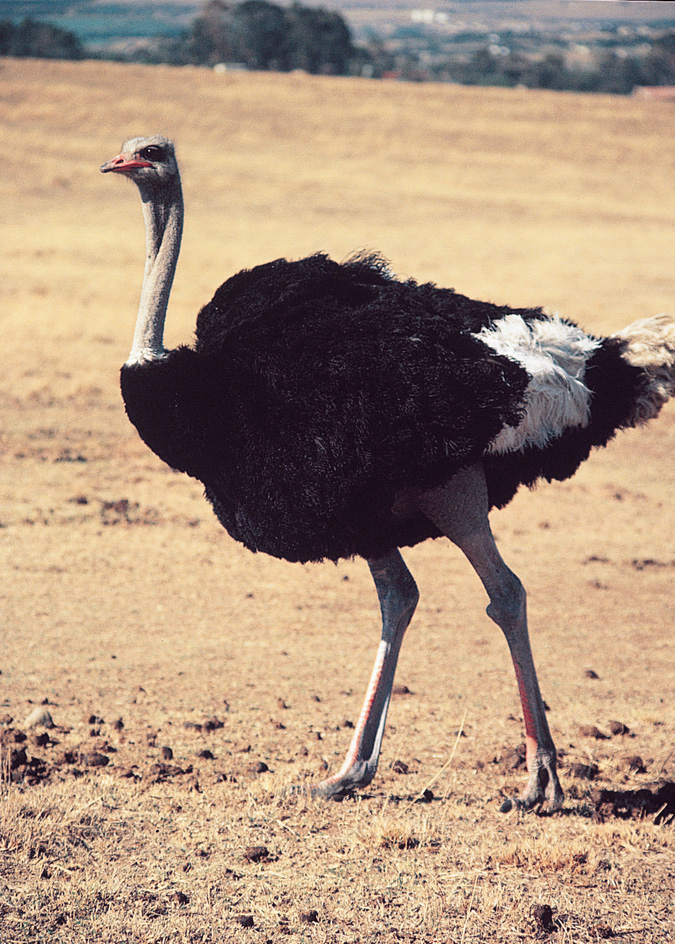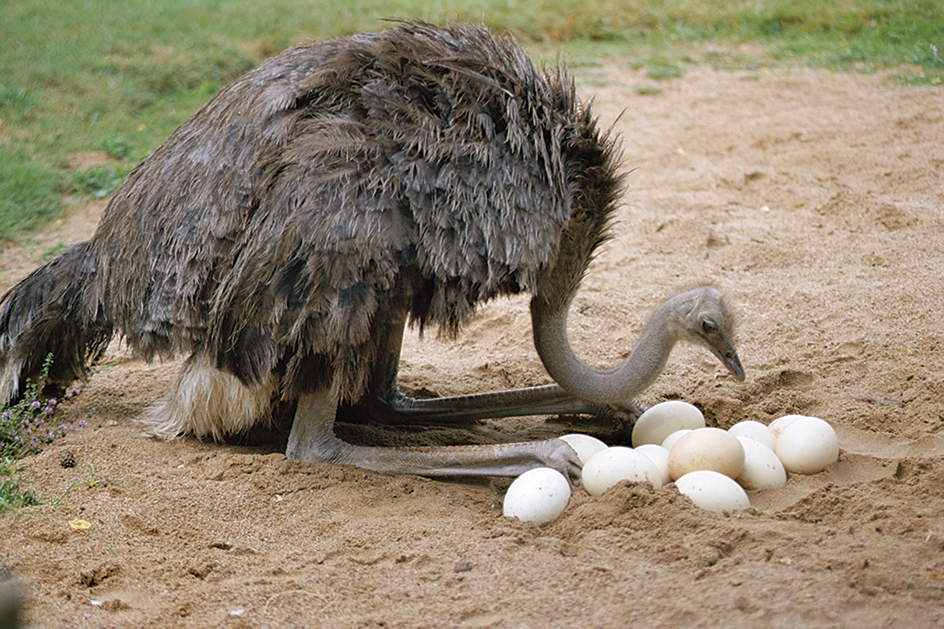Ostrich is the largest living bird. It may stand nearly 8 feet (2.4 meters) tall and weigh as much as 345 pounds (156 kilograms). Ostriches live on the plains and deserts of Africa.

The ostrich is the only bird that has only two toes on each foot. The rhea, which is sometimes called the South American ostrich, is three-toed. It is not really an ostrich.
The male ostrich has black feathers on its bulky body, with large white feathers, called plumes, on its wings and tail. The female ostrich has dull brown feathers on her body and white feathers on her wings. The ostrich’s long, thin legs, upper neck, and small head have almost no feathers. The bare skin ranges in color from pink to blue. Thick black eyelashes surround its eyes, which measure almost 2 inches (5 centimeters) across.
The male ostrich has an unusual voice. It can make a deep booming call. Both males and females may make deep hissing sounds when threatened.
Loading the player...Ostrich
The ostrich cannot fly, but it is known for its speed on the ground. Its long legs can take 15-foot (4.6-meter) steps at speeds up to 40 miles (64 kilometers) per hour. The ostrich’s speed and sharp eyesight help the bird escape from predators (hunting animals). These predators are mainly lions, cheetahs, and people. The ostrich also kicks with its powerful legs. Its long toes, the largest of which is 7 inches (18 centimeters) long, have thick nails that serve as weapons when the bird is cornered. It may use such kicks to defend the nest. It also may pretend to be injured. In this way, it leads predators away from the nest.
The belief that the ostrich hides its head in the sand when frightened is not true. This belief probably stems from the bird’s habit of rearranging the eggs in the nest with its bill. From a distance, it may appear that the ostrich’s head has disappeared into the sand.
Loading the player...Ostriches
How the ostrich lives.
The ostrich usually eats plants. It occasionally eats insects and other small animals. It also eats much sand and gravel to help grind food for digestion. Ostriches drink water when they find it. But they can live for long periods without drinking if the plants they eat are green and moist.
Ostriches are polygamous—that is, both males and females have more than one mate. Each cock (male) digs a shallow nest in sand, and from three to six hens (females) lay their eggs in the nest. Each hen lays as many as 10 eggs. Each egg is almost round, nearly 6 inches (15 centimeters) in diameter, and weighs about 3 pounds (1.4 kilograms). The eggs are a dull yellow and have large pores and a thick shell.

The male sits on the eggs at night. But during the day the dominant (highest-ranking) hen helps keep them warm. The eggs hatch in about six weeks. Ostriches usually do not live for more than 40 years.

Ostrich farming.
Hundreds of years ago, great flocks of ostriches roamed over Africa and western Asia. Arabs in western Asia hunted ostriches for sport, and Africans took their eggs for food or killed the birds for their feathers.
In the late 1800’s and early 1900’s, ostrich plumes became popular as decorations on hats and clothing. Large numbers of ostriches were killed for their plumes, and the birds disappeared from Asia and from much of Africa. Ostrich plumes were in great demand and were so expensive that it became highly profitable to raise ostriches in captivity. Plumes could be taken twice a year from live birds kept on ostrich farms. Ostrich farms were established in Africa, Australia, southern Europe, and the United States. But between 1914 and 1918, fashions changed and the market for ostrich plumes dropped sharply.
Today most ostrich farms are in South Africa and Israel, but a few can be found in Europe and the United States. Ostriches are now raised for their skin, which provides fine quality leather to make gloves, shoes, and bags. Ostriches also are raised for their eggs and meat. In addition, ostriches are popular zoo animals because of their unusual appearance and usually mild disposition.
